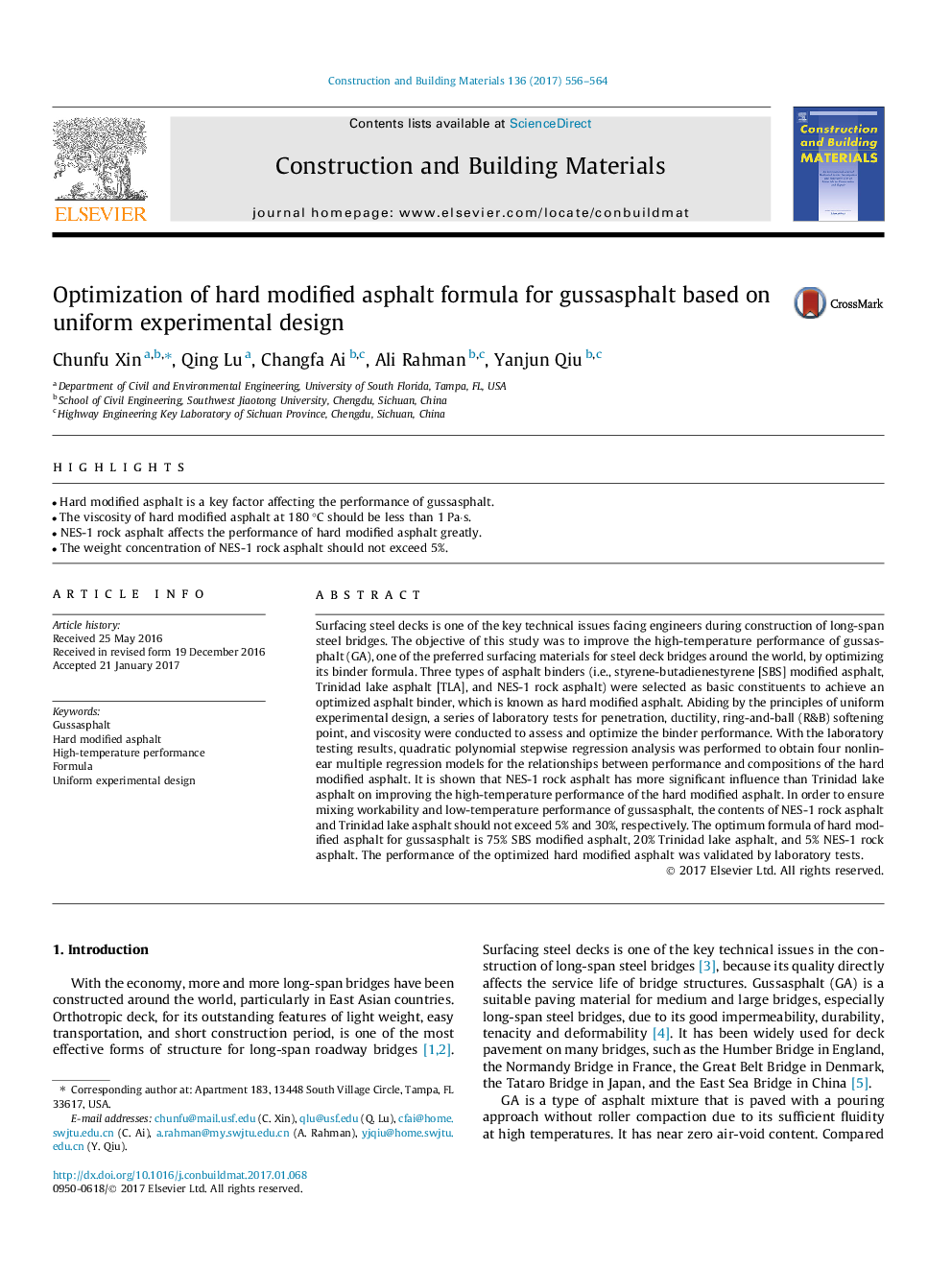| Article ID | Journal | Published Year | Pages | File Type |
|---|---|---|---|---|
| 4918569 | Construction and Building Materials | 2017 | 9 Pages |
Abstract
Surfacing steel decks is one of the key technical issues facing engineers during construction of long-span steel bridges. The objective of this study was to improve the high-temperature performance of gussasphalt (GA), one of the preferred surfacing materials for steel deck bridges around the world, by optimizing its binder formula. Three types of asphalt binders (i.e., styrene-butadienestyrene [SBS] modified asphalt, Trinidad lake asphalt [TLA], and NES-1 rock asphalt) were selected as basic constituents to achieve an optimized asphalt binder, which is known as hard modified asphalt. Abiding by the principles of uniform experimental design, a series of laboratory tests for penetration, ductility, ring-and-ball (R&B) softening point, and viscosity were conducted to assess and optimize the binder performance. With the laboratory testing results, quadratic polynomial stepwise regression analysis was performed to obtain four nonlinear multiple regression models for the relationships between performance and compositions of the hard modified asphalt. It is shown that NES-1 rock asphalt has more significant influence than Trinidad lake asphalt on improving the high-temperature performance of the hard modified asphalt. In order to ensure mixing workability and low-temperature performance of gussasphalt, the contents of NES-1 rock asphalt and Trinidad lake asphalt should not exceed 5% and 30%, respectively. The optimum formula of hard modified asphalt for gussasphalt is 75% SBS modified asphalt, 20% Trinidad lake asphalt, and 5% NES-1 rock asphalt. The performance of the optimized hard modified asphalt was validated by laboratory tests.
Keywords
Related Topics
Physical Sciences and Engineering
Engineering
Civil and Structural Engineering
Authors
Chunfu Xin, Qing Lu, Changfa Ai, Ali Rahman, Yanjun Qiu,
